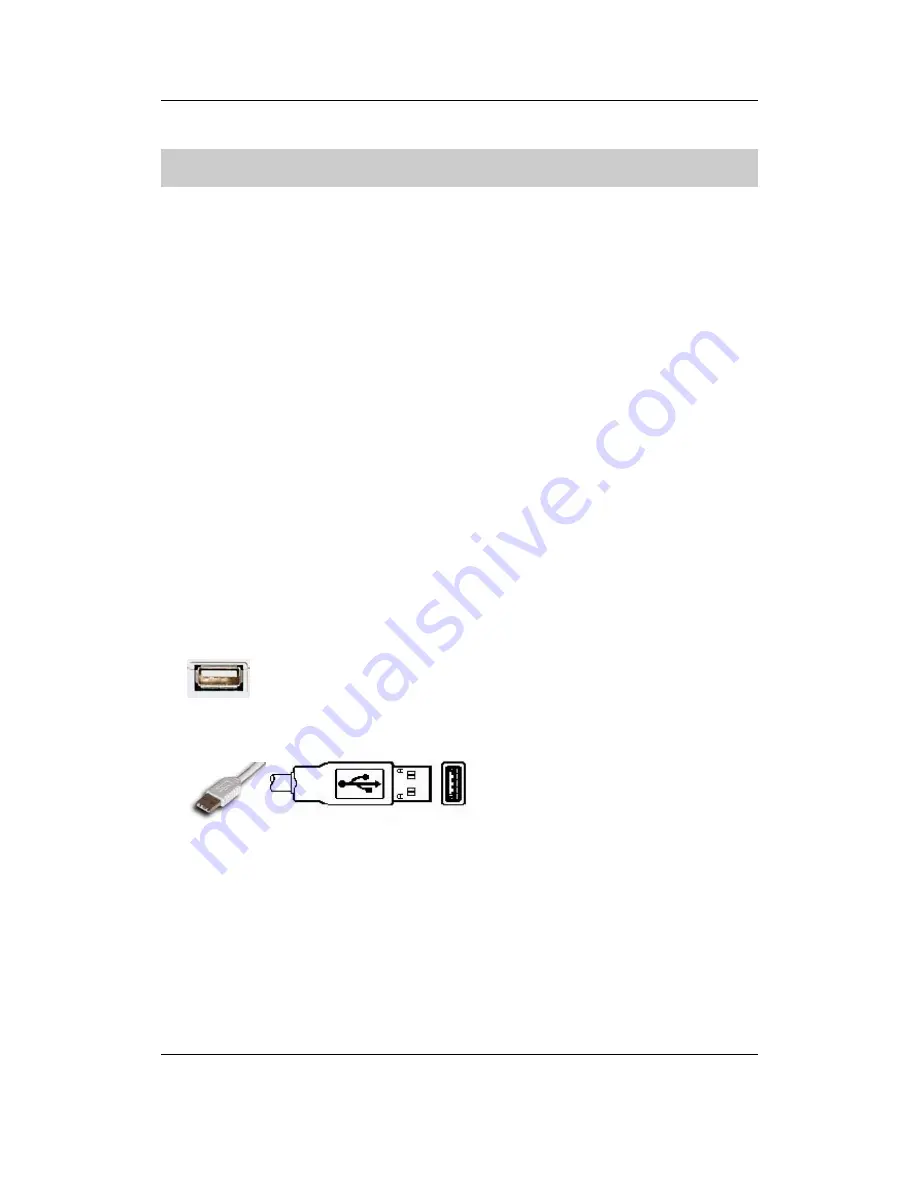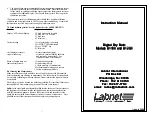
AUDIOTRAK OPTOPlay User’s Guide
- 3-
I
NSTALLATION
One of many benefits of a USB device is the ease of installation. Simply plug OPTOPlay into a
USB port, and the device is installed.
M
INIMUM
S
YSTEM
R
EQUIREMENTS
Intel Celeron 366 MHz CPU or equivalent AMD CPU
Windows 98SE, ME, 2000, XP operating system
One available USB port
64MB of RAM
H
ARDWARE
I
NSTALLATION
Before you begin the installation, make sure you have read the section in your computer’s
manual for installing USB devices. Your computer’s manual should describe the precautions
you should take during installation. Typically, there is no need to shut down the computer to
install a USB device, however, we will begin the installation with the computer turned off.
1.
Turn off the computer.
2.
Find the USB port on your computer. A standard USB port is shown below. It is typically
located next to the PS/2 and serial ports on the back of a desktop computer system, or
on the side of a notebook computer.
3.
Plug OPTOPlay’s USB cable (Series A plug type) into the USB port of your computer.
4.
Turn on the computer. OPTOPlay gets power from the computer via the USB connection,
eliminating the need for an external power supply.
S
OFTWARE
I
NSTALLATION
After connecting the OPTOPlay, your computer will automatically detect the AUDIOTRAK
OPTOPlay as USB Composite Device and will be proceed with the installation. The steps below
are for a Windows 98 installation. Installations in other operating systems will proceed in a
similar manner.































